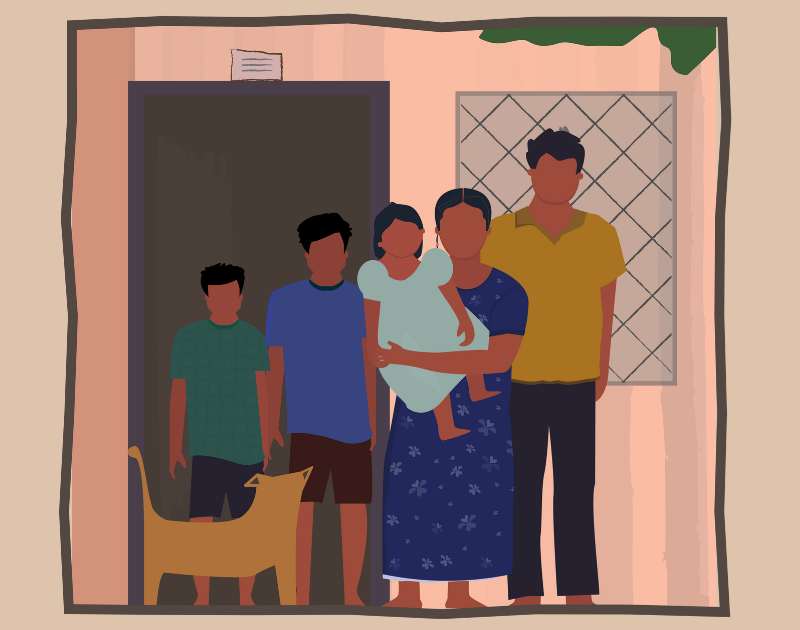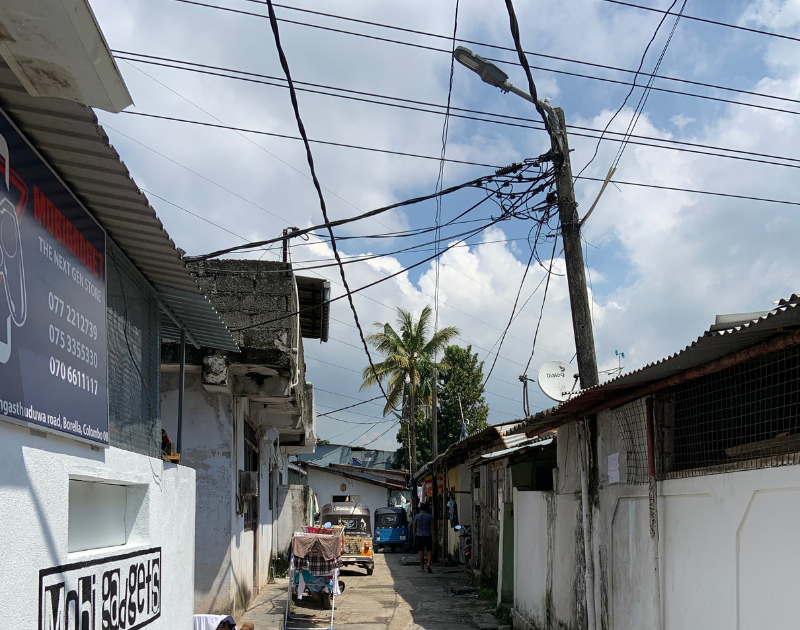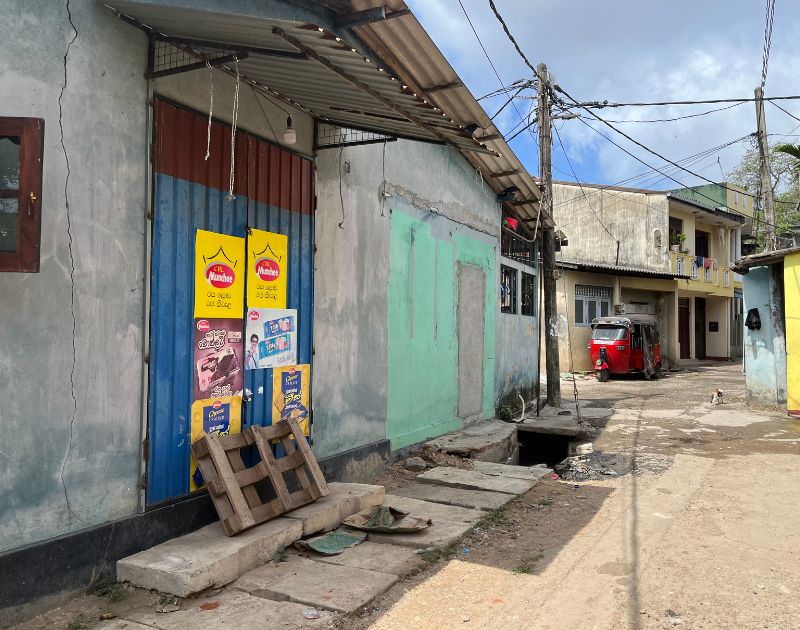
- Home
- Knowledge Insights
- Recovery Without Relief: How Colombo’s Working Class Poor Stay Afloat
With the worst of the COVID-19 pandemic and economic crisis behind us, many have been quick to categorise Sri Lanka’s status quo as being in a state of economic recovery. However for Colombo’s working class poor, daily life remains unchanged. Even in Colombo where the wheels of economic development are turning the fastest, these communities are using the same survival strategies since 2022 of cutting expenses, depending on borrowing from the informal credit market, and juggling multiple income streams just to get by. If households are still making trade-offs and sacrifices as before, can we truly call this a recovery?
Meeting the requirements for a basic standard of living has gotten harder for the working class poor, who’ve faced the brunt of Sri Lanka’s recent trajectory of formidable challenges. In a 25 household semi-structured survey conducted in December 2024 by Colombo Urban Lab (CUL) in Panchikawatte, Colombo 10, *Ranmali divulged that her family’s economic hardships started to intensify at the onset of the pandemic, when the fabric shop her husband worked in temporarily closed. Even after the shop reopened, reduced trade trickled down to workers receiving lower wages. As the sole provider for the family, her husband had no option but to borrow. Since 2020 they have cut spending on food and their children’s education.
“While we try to manage all expenses as much as possible, we also cut down on additional expenses as much as possible.” – *V. Pravina, 56.
This is the reality of Sri Lanka’s working class poor, who don’t feel the load of their financial burdens lightened, even as Sri Lanka is showing positive signs of recovery. While the cost of living has reduced, the lived realities of working class communities do not reflect the same. This is because these indicators get sifted through barriers of existing debt, outstanding payments and other burdens that have accumulated in their lives, with some debts accumulating as far as the start of the pandemic or earlier. Household debt includes microfinance loans, pawned jewellery, liquidating assets, leasing, or borrowing from friends or relatives.
Whether it’s borrowing money to meet their expenses or finding money to pay off already borrowed money, household debt is a big part of the lives of Colombo’s working class communities. According to the 2023 United Nations Development Programme’s (UNDP) report on Sri Lanka’s multidimensional vulnerabilities, approximately 33.4% of the populace is multidimensionally vulnerable because of debt related factors. The report also shows that heightened levels of indebtedness contribute to financial instability and restricted access to resources.
Why People Borrow
The question of “why they borrow” is complex but has been researched thoroughly, especially after Sri Lanka’s 2022 economic crisis which pushed a lot of people into precarious conditions. Factors such as being stuck in cycles of debt, lack of a fixed monthly income, lack of income opportunities, lack of access to formal financial institutions, absence of adequate social protection are some of the main reasons people return to forms of informal lending.
In the Panchikawatte survey, most respondents listed some form of debt repayment as one of their monthly expenses while nearly all said they would borrow cash or pawn jewellery if an emergency arose. Only a handful could rely on their hard earned savings in an emergency. This coincides with national research which highlights that the Western Province is the second most likely to borrow for basic consumption (21.3%). This form of borrowing is carried out after poorer communities have slashed their expenses- as shown in Panchikawatte wherein majority prioritised food price over quality or preference.
“There is no solution other than borrowing.” – *Krishnapriya, 43.
The smallest loan amount (and the most commonly borrowed) is the borrowing done as a survival strategy to meet basic needs. Amounts ranging from LKR 10,000 – 40,000 are borrowed for basic needs such as utilities, groceries, children’s education etc. Despite the small sums, interest rates are high and usually range from 10 – 20%. For instance, in Panchikawatte, *M. P. Kavitha repays the LKR 20,000 borrowed for her household’s utility bills and her children’s educational needs with a 10% interest rate.
Furthermore, small loans aren’t always sufficient to repay utility bills- particularly when people have longstanding utility bills already. Some families have outstanding utility bills from as far as the onset of the pandemic that has cumulatively created an exorbitant debt burden over the years. *C. Balasuriya related how after her electricity was disconnected, two of her relatives living abroad helped reinstate the connection by paying an outstanding bill of LKR 52,000.
Money lenders or microfinance companies are almost always who people resort to for the borrowing of money for economic mobility or to improve living conditions. Notably, Colombo has the highest reliance district wise on money lenders, with 23.8% turning to them. In the Panchikawatte survey this manifested as debt incurred to purchase/ repair three-wheelers, to pay key money for houses/ apartments, or even to send children abroad. Households noted taking on debts of between LKR 60,000 – 250,000. 62 year old *Farha Mohommed shared that she is paying LKR 4,500 weekly to the microfinance company she borrowed LKR 150,000 from to send her son abroad but that she does not know the interest amount.
Furthermore, taking loans to finance existing debt is part of the reason why so many working class families are stuck in a cycle of debt, wherein seemingly the only way out is to dig an even bigger hole.
However, it’s not always that people enter debt blindly without knowing its implications. Research from CUL’s research shows awareness on the dangers of borrowing with interest from the informal credit market. Some households say they never borrow on high interest and even in an emergency, they would much rather borrow without interest from a friend or relative rather than borrowing from an institution or money lender with interest.
“We first ask from the children and if that doesn’t work we’ll borrow money without interest from a neighbour.” – *Sugandi, 69.
While people do pawn jewellery as well, this recent survey revealed that people borrowed on interest more than they resorted to pawning jewellery. Pawning jewellery for quick money was mostly employed by them during the pandemic and economic crisis, and many perhaps do not have any left to pawn.
Debt burdens falling outside the typical perimeters for borrowing, also include borrowing for social obligations. Cultural participation is a fundamental aspect of how poorer communities who rely on each other to survive, continue to thrive. As such, people will still be compelled to spend on cultural practices, even if it means taking loans that they struggle to repay. In Panchikawatte, one interviewee shared that she borrowed LKR 25,000 to pay for her mother’s 3 month death anniversary (dhane). This loan ultimately snowballed into an unbearable debt burden that put her family through a lot of stress and pressure. A major aspect of security for these communities is social cohesion, as they rely on their informal ties with each other more than they can on formal infrastructure or social security networks they may not have access to. In Panchikawatte, even those receiving Aswesuma reported needing to borrow for daily necessities or emergencies.
Given this gap, community financial systems like borrowing from peers and Rotating Savings and Credit Associations (ROSCAs) play a crucial role in bringing stability to their lives and livelihoods. A ROSCA is an informal savings arrangement where members contribute a fixed amount to a collective fund at regular intervals, with each member taking turns to receive the full sum. ROSCA contributions in Panchikawatte typically ranged from LKR 100 – 300 per week or month. Considering how essential these social ties are, government policies that threaten them such as the Urban Regeneration Programme and imposing selective criteria for Aswesuma should be rethought.
In conclusion, despite Sri Lanka being in economic recovery, the lived realities of the working-class poor in Colombo tell a different story. Addressing their lived realities should be discussed when assessing Sri Lanka’s next step forward, as a country that should truly offer economic recovery for all.


